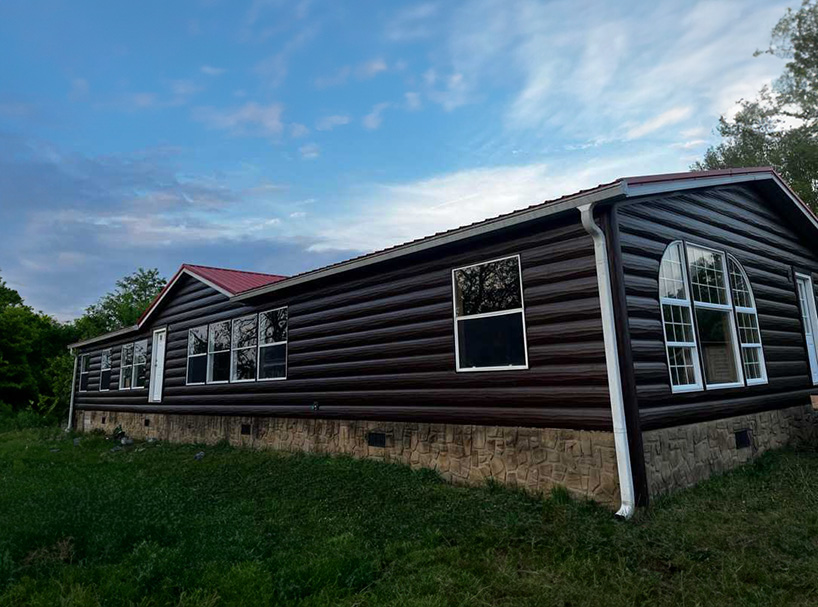- HEP
- Energy Efficiency

 Energy Efficiency
Energy Efficiency
Energy Efficiency | Siding Solutions | Roofing | Guild
HEP’s energy-smart approach combines durable, weather-resistant roofing with top-tier siding solutions to help your home maintain optimal temperatures year-round. By reducing heat exchange and preventing moisture intrusion, our designs keep utility costs low while extending the life of your property’s exterior. Enjoy peace of mind knowing your investment is safeguarded against the elements with high-quality materials and proven craftsmanship.
Our experienced team prioritizes comfort and efficiency at every step, tailoring each project to match your style preferences and performance needs. Whether you’re upgrading your existing exterior or building from the ground up, we ensure seamless integration of roofing and siding installations that boost energy savings and enhance curb appeal. Trust HEP to deliver a worry-free improvement process that leaves you with a home ready to weather any season—beautifully and efficiently.
FAQs
What is an energy-efficient roofing and siding solution, and how does it work?
Energy-efficient roofing and siding solutions are designed to minimize the amount of heat entering or escaping your home. These solutions typically involve materials treated with coatings or formulated to reflect and reduce heat transfer, thereby lowering reliance on air conditioning in warm climates and helping retain warmth in cooler weather. By reducing heat flow, they help stabilize indoor temperatures, leading to increased comfort and lower energy bills. In addition, many energy-efficient systems are engineered to withstand the elements more effectively, providing longer-lasting protection and fewer repairs over time. Overall, by choosing optimized roofing and siding products, homeowners can simultaneously boost comfort, cut down on energy costs, and help protect the environment.
How can an energy-efficient roof reduce my heating and cooling costs?
An energy-efficient roof can help control the temperature inside your home by reflecting more sunlight and absorbing less heat. High-reflectance materials—like specialized shingles or coatings—bounce away significant amounts of solar radiation, keeping your attic and living spaces cooler during the summer. Consequently, you don’t have to rely as heavily on air conditioning. During colder months, some products offer improved insulation, helping maintain warmth and reducing heating expenses. Additionally, many modern roofing systems also feature improved ventilation, facilitating better airflow in your attic. Overall, this combination of reflectivity, insulation, and ventilation reduces year-round energy consumption for heating and cooling.
What factors should I consider when choosing an energy-efficient roofing material?
When selecting an energy-efficient roofing material, you should weigh factors such as local climate, budget, durability, and architectural style. In warmer regions, reflective surfaces like metal roofs or specially coated shingles may perform best at minimizing heat absorption. In cooler zones, you may look for materials designed with higher insulation properties. You will also want to consider the upfront costs compared to potential long-term savings on utilities. Beyond cost, examine warranties, fire ratings, and any maintenance requirements. Make sure to select products that have the proper certifications, such as the ENERGY STAR label, which helps verify that they meet or exceed established efficiency standards.
Is it cost-effective to invest in energy-efficient siding and roofing solutions over time?
Yes, energy-efficient siding and roofing solutions typically offer long-term savings that justify their initial cost. While upfront installation expenses can be higher than conventional materials, the reductions in your monthly energy bills often offset these costs. Additionally, these materials tend to have longer lifespans and require fewer repairs, potentially reducing owner expenses in the long run. Improved thermal regulation can also enhance the comfort level in your home, leading to less reliance on heating or cooling systems. Many homeowners find that these energy-efficient upgrades also increase property value, making it a worthwhile investment when it comes time to sell or refinance.
How often do energy-efficient roofing and siding solutions need maintenance or replacement?
Energy-efficient roofing and siding solutions generally follow similar maintenance schedules as their conventional counterparts, but they often last longer due to improved materials. Regular inspections are recommended—usually once or twice a year—to check for any signs of wear, such as cracks, compromised seals, or damage caused by water or debris. Proper upkeep may only require cleaning, minor repairs, or resealing, depending on the product. If installed correctly, well-maintained metal roofs or high-quality composite shingles can last up to 40 or 50 years, while siding can remain in excellent shape for several decades. By following manufacturer guidelines and performing timely inspections, you can ensure your roof and siding provide ongoing energy efficiency.
Are there any tax credits or rebates for installing energy-efficient roofing and siding solutions?
In many regions, homeowners can benefit from federal, state, or local incentive programs for installing energy-efficient materials, including specific roofing and siding products. Tax credits and rebates, when available, can help substantially reduce the upfront costs of an upgrade. Some utility companies also offer incentives for improving home energy performance. The eligibility and amount of credit or rebate may vary depending on factors like energy performance ratings, product certifications (such as ENERGY STAR), and the year of installation. To be sure you receive all possible benefits, research your local programs, consult with professionals, and follow official guidelines when choosing and installing energy-efficient roofing and siding.